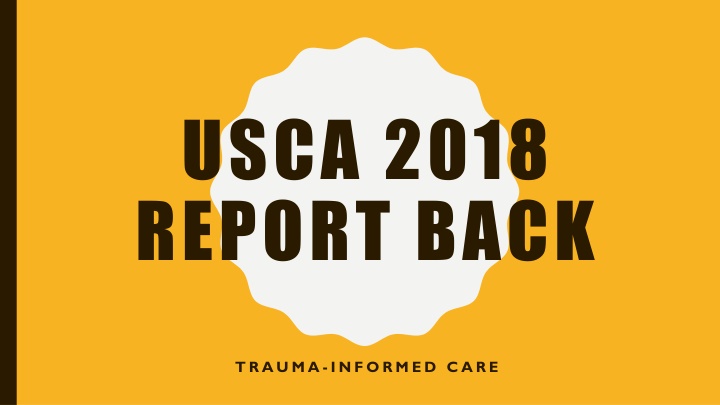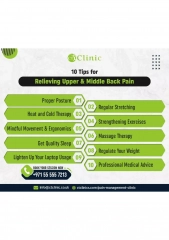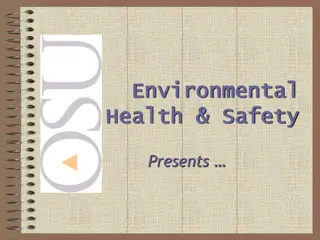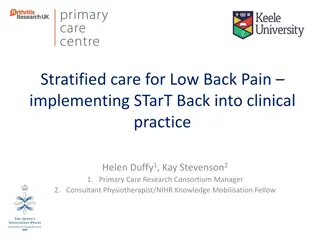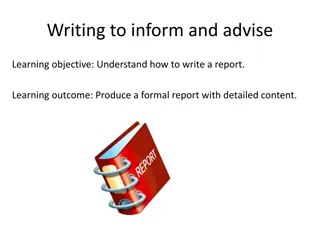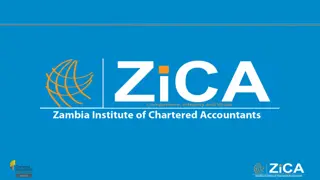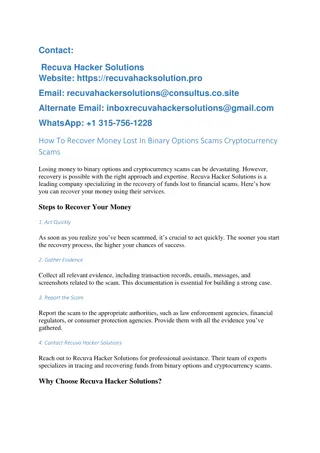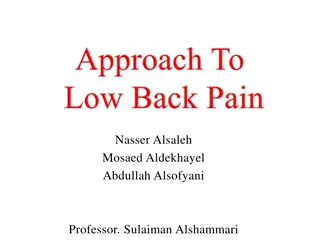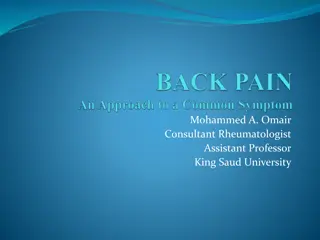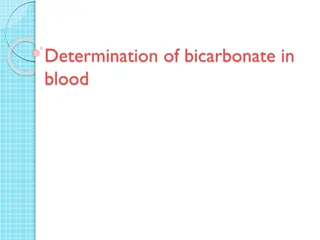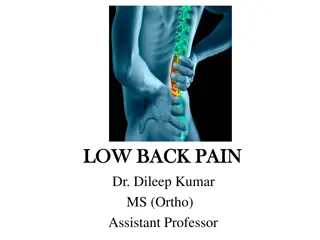USCA 2018 REPORT BACK
This report discusses trauma-informed care, intersectionality in HIV prevention, and the importance of addressing race, gender, and social determinants in healthcare to reduce disparities. It highlights strategies for stigma reduction and promoting resilience among women of color, emphasizing the interconnected nature of health outcomes.
Download Presentation

Please find below an Image/Link to download the presentation.
The content on the website is provided AS IS for your information and personal use only. It may not be sold, licensed, or shared on other websites without obtaining consent from the author.If you encounter any issues during the download, it is possible that the publisher has removed the file from their server.
You are allowed to download the files provided on this website for personal or commercial use, subject to the condition that they are used lawfully. All files are the property of their respective owners.
The content on the website is provided AS IS for your information and personal use only. It may not be sold, licensed, or shared on other websites without obtaining consent from the author.
E N D
Presentation Transcript
USCA 2018 REPORT BACK TRAUMA -INFORMED CARE
PRESENTED BY: JESSICA PRICE BAY AREA NORTH & CENTRAL COAST AIDS EDUCATION AND TRAINING CENTER
LEARNING OBJECTIVES Explore mechanisms for stigma reduction Identify one strategy to promote resilience among women Describe the importance of trauma-informed care Identify one technique used to implement trauma-informed care into practice
WHAT IS INTERSECTIONALITY? The overlap of various social categorizations (race, gender, ability, etc.) and the resulting privilege and oppression. The effects are cumulative and complex. Kimberl Crenshaw & Emma Degraffenreid Andrasik, 2018
An intersectional approach to HIV prevention and intervention views race, class, and gender as categories that interact with systems of social and power relations in society. Systems of social and power relations Onaiwu, 2018
THE IMPORTANCE OF INTERSECTIONALITY IN HIV PREVENTION African American women represent 66% of women living with HIV First take an intersectionality approach first when approaching the challenges around HIV; then social determinants of health / HIV-related disparities can be addressed Gender and race are strongly linked to health outcomes This includes disparities along the HIV care continuum. Much of the HIV prevention and intervention work for women has failed to focus on the multifaceted nature of health and wellbeing for women of color. Issues of race, gender, and socioeconomic status are largely treated as discrete categories rather than interconnected issues. As a result, gender and race are often isolated and treated as independent contributors to health outcomes. This may be particularly detrimental to the understanding of HIV vulnerability, disease transmission, and health outcomes among women of color, women who do not identify as cisgender, and women who hold multiple identities, statuses, or conditions simultaneously (e.g. race, gender, ethnicity, socioeconomic status, etc). Onaiwu 2018
STIGMA STIGMA DEFINED TYPES OF STIGMA Stigma is defined as the co-occurrence of labeling, stereotyping, separating, status loss, and/or discrimination associated with a condition or identity in the context of power imbalance Individual / Internalized Stigma Interpersonal / Public Stigma Structural Stigma Andrasik and Pompa, 2018
STIGMA INDIVIDUAL / INTERNALIZED STIGMA This occurs when people with devalued conditions believe that negative public attitudes apply to them that they are true and suffer negative consequences as a result Depression Decreased awareness of HIV prevention methods and HIV testing Reduced condom use Increased likelihood to have sex while high or intoxicated Non-disclosure of HIV status to sexual partners Anxiety Anger Andrasik and Pompa, 2018
STIGMA INTERPERSONAL / PUBLIC STIGMA This refers to the negative attitudes held by members of the public about people with devalued characteristics and/or identities (between the stigmatized and non-stigmatized groups) HIV/AIDS Perceptions of vulnerability HIV testing HIV status disclosure Homonegativity HIV prevention efforts Minority Female Identity Fear Angry/Hostile/Unapproachable Victimization Sexualized Andrasik and Pompa, 2018
STIGMA STRUCTURAL STIGMA This refers to the societal-level conditions, cultural norms, institutional policies that constrain the opportunities, resources, and well-being of the stigmatized Impact of structural stigma on PLWH - State policies related to HIV criminalization, immigration and LGBT rights were shown to be related to HIV incidence and prevalence as well as state-level perceptions of community/institutional stigma. Nastad 2014 Andrasik and Pompa, 2018
MULTIPLE STIGMAS: INTERSECTING IDENTITIES Race Gender HIV Sexual orientation Immigration Ethnicity Ability Socio-economic status / education / income History of incarceration / criminal justice Substance use Andrasik and Pompa, 2018
STIGMA STIGMA AND OTHER SOCIAL DETERMINANTS INFLUENCE THE HIV CARE CONTINUUM BEFORE AN HIV DIAGNOSIS IS EVEN MADE NASTAD.ORG
PROMOTING RESILIENCE AND REDUCING STIGMA Each stigma related event can have additive impacts Multiple and intersecting stigmas can acutely contribute to poor long-term health consequences for women. Interventions need to consider: The unique position of women Social support programs Promotion of resilience Intervening on HIV-related stigma for women can have far-reaching impacts Need to examine and implement Resilience focused programming Parker, 2018
PROMOTING RESILIENCE AND REDUCING STIGMA Social support Self-efficacy Building Trust and Empowerment Spirituality Self-esteem Parker, 2018
CHRISTIES PLACE, SAN DIEGO Christie s Place is the only organization in San Diego County whose mission is dedicated to serving women, children and families living with HIV/AIDS. They promote resilience and reduce stigma through a continuum of services: Social support: creates community and family; supportive services Empowerment: women s retreat 40 women go to the mountains, focused on empowerment and leadership development Isolation reduction: key to trauma recovery and building stronger connections Christie s place is now the only place that offers a week long training for women interested in becoming peer navigators or becoming part of the HIV workforce Nortrup, 2018
SISTAS HEALING-OLD WOUNDS (SHOW) ALBANY, NEW YORK Roni Minter, the founder and president Offer many recovery programs: SHOW is an advocacy program to help formerly incarcerated women cope with trauma sustained while behind bars There was an evening for giving incarcerated women awards The first time several of them had seen each other since prison She recognized that families and entire communities torn apart by mothers lost to prisons and the cycle of addiction and incarceration Not a single woman has gone back to jail after attending one of these events (and women usually do at some point) SHOW is unique to other similar groups in that staff and board represent the community Sustaining female social support and self- esteem is important in recognizing and moving past trauma from prison Minter, 2018
HOW IS TRAUMA DEFINED? HOW IS TIC DEFINED? Trauma results from an event, series of events, or set of circumstances that is experienced by an individual as physically or emotionally harmful or life threatening and that has lasting adverse effects on the individual s functioning and mental, physical, social, emotional, or spiritual well-being A program, organization, or system that is trauma-informed realizes the widespread impact of trauma and understands potential paths for healing; recognizes the signs and symptoms of trauma in staff, clients, and others involved with the system; and responds by fully integrating knowledge about trauma into policies, procedures, practices, and settings. Substance Abuse and Mental Health Services Administration (SAMHSA, 2013) Source: SAMHSA, 2012, p.4 Trauma is a normal response to an abnormal situation Brown, 2018
WHY DOES TRAUMA MATTER? ACE study: 1996 data out of San Diego Kaiser (18,000) middle class white people. Looked at 10 adverse childhood experiences (ACEs), and the number is strongly related to development of risk factors for disease, and well-being throughout the life course. Biggest public health crisis of our time and it s barely spoken about. This data really helps make the case. HIV cascade: starts with many factors (racism, stigma) that impact every stage of the continuum (not static) Women with trauma living with HIV: Lifetime trauma (71%) https://www.cdc.gov/violenceprevention/ Trauma and PTSD predict poorer HIV-related health outcomes such as poor health-related quality of life. acestudy/about.html Nortrup, 2018
EXPERIENCE OF TRAUMA Trauma can occur throughout the lifetime It is often experienced first in early childhood and followed by subsequent traumatizing experiences Not everyone experiences trauma in the same way; some people have few or no lingering symptoms Individuals experiencing repeated, chronic or multiple traumas are more likely to exhibit pronounced symptoms including: Substance Use Disorders Abuse and Dependence Mental Health Problems Depression symptoms and disorder Anxiety symptoms and disorder Impairment in relational/social and other major life areas (including treatment) Increased risk for mental illness and increased symptom severity Health Problems/Physical Disorders & Conditions Sleep Disorder Andrasik, 2018
EFFECTS OF TRAUMA INDIVIDUAL LEVEL IMPACT Internalized stigma Foreshortened sense of the future Sense of purpose Symptoms of PTSD, survivor guilt, anxiety, anger, grief, depressive symptomology Relationships Impaired communication Expectations of self and others Substance abuse Health outcomes Exaggerated personal attachments or independence Catastrophic expectancy World view world as a safe place Impaired self-esteem Emotional regulation Andrasik, 2018
HOW DOES TRAUMA EFFECT LGBTQI COMMUNITIES? Experience trauma at a much higher rate: Examples: hate violence, intimate partner violence, and sexual assault Historical or cultural trauma: institutional trauma, passed down through epigenetics, it s a remembered experience in the body that may have a lasting impact Examples: mass shootings; 1981 when AIDS crisis began 70% of PLWH have had two or more traumatic experiences in their life Average ACE is 7 among this population It s a cumulative effect and sometimes we re not sure what s happening and how it effects us Trauma can lead many LGBTQI individuals to find chosen families who are more accepting Brown and Pompa, 2018
10 IMPLEMENTATION DOMAINS OF TRAUMA INFORMED CARE (SAMSHA) 1. Governance & leadership (need the buy-in from everyone) there is not much literature on how to implement 2. Policy: takes at least a year (need to break out in groups and create together) 3. Physical environment: safe & inviting, gender neutral, locks on bathroom, etc. 4. Engagement and Involvement: set apart from standard approaches 5. Cross Sector Collaboration: several folks involved 6. Screening, Assessment and Treatment Services: don t screen for something universally if you re not going to do anything about it. Monitor progress, evaluation with baseline surveys part of the transparency. Focus groups as well. 7. Training and Workforce Development 8. Progress Monitoring and Quality Assurance 9. Financing 10. Evaluation Brown, 2018
WHY ADOPT A TIC PARADIGM? We address so many issues in the healthcare system: Mental health, substance abuse, food insecurity, financial issues, healthcare navigation We don t talk about the past that may effect them right now. Talk therapy is not for trauma (that s the frontal lobe) Trauma is in the non-verbal part of the brain that is not accessed verbally a fragmented experience. Hard to give a fluid narrative of what happened. Different stages of approaching trauma: Help patients feel safe 3 mins of mindfulness can help get you out of the sympathetic nervous system gets them out of fight or flight mode Practicing motivational interviewing starting where the client is, open-ended questions Follow each person s lead Approaching each person with cultural humility don t make assumptions. Post-traumatic growth is the most important part of a traumatic experience Resilient leadership is a democratic rather than authoritative Brown, 2018
All of you are perfect and you could use a little improvement -- Soto Zen Priest Suzuki Roshi
THANK YOU! SF HIV FRONTLINE ORGANIZING GROUP AND FRONTLINE WORKERS
REFERENCE LIST The Urgency for Intersectionality in HIV Prevention for Women, presented by the Women s HIV Research Collaborative: Michele Andrasik, EdM, PhD, HIV Vaccine Trials Network; Danielle M. Campbell, MPH Women s HIV Research Collaborative; Morenike Giwa Onaiwu, MA AIDS Clinical Trials Group; and Kimberly Parker, PhD, MPH, MCHES, Texas Woman s University Healing Trauma Within LGBT Family Dynamics: An In-Depth Panel Discussion, presented by Naomi Busler, Dr. Lauren Brown, Tony Walker, and Larry Scott-Walker Forgotten Population: An Inside Scoop on Formerly Incarcerated Women, presented by Roni Minter, founder of Sistas Healing Old Wounds (SHOW) HIV Stigma: Why Trauma Informed Care Matters, presented by Robert Pompa, Lehigh Valley Health Networks AIDS Activities Office Trauma-Informed Care for People Living with HIV: Strategies for Implementation, presented by Erin Nortrup, AIDS United
